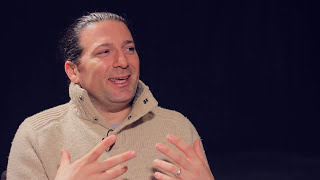In Chapter 8 of 17 in his 2012 Capture Your Flag interview, leadership philosopher Bijoy Goswami answers "What is the Difference Between Effective Management and Leadership?" Goswami discusses the duality of leadership and management and also how they differ. He talks about management, as an externalized skill, can be learned and leadership, more internalized, is more difficult to teach. Bijoy Goswami is a writer, teacher, and community leader based in Austin, Texas. He develops learning models, including MRE, youPlusU, and Bootstrap, to help others live more meaningfully. Previously, he co-founded Aviri Software after working at Trilogy Software. Goswami graduated from Stanford University, where he studied Computer Science, Economics, and History.
Transcript:
Erik Michielsen: What is the difference between effective management and leadership?
Bijoy Goswami: Management I think is about how you get from A to B, you know. What are the set of things that need to be accomplished from getting someone or a team or an organization from A to B. So, it’s about breaking things down to tasks about, you know, understanding what’s something—what’s involved, who’s on the team, what are people doing, that kind of thing.
Leadership is providing the inspiration. The why. Why should we do those tasks? Why does it matter that we’re going from here to A to B. So, to me these are very linked. The duality of management and leadership is that they’re linked, intermingled but they’re very different.
So, a lot of the times people might be very good at one and might not be as good at the other but leadership again I think is, is certainly the place where I get excited because I think management is, it can be learned very easily because it’s an externalize skill, you know, you kinda go okay, here’s some principles, here’s some ways of doing it. You know, I think a lot of times leadership is taught like management which I think is a mistake like “Leadership, there’s this 25 rules of leadership”, I don’t think it works that way.
I think leadership is much more personal, it’s much more, you know, it comes from within. So, that is the hard thing is that in a way I don’t think leadership can be taught. You think you can be given a way to find out what your leadership is about, who you are as a leader. So, then maybe you can teach that like I work in leadership Austin in Austin, that’s a lot of what happens there is they go what is leadership to you? Whereas with management, I think you can really sit there and teach that and say here’s what management is.























